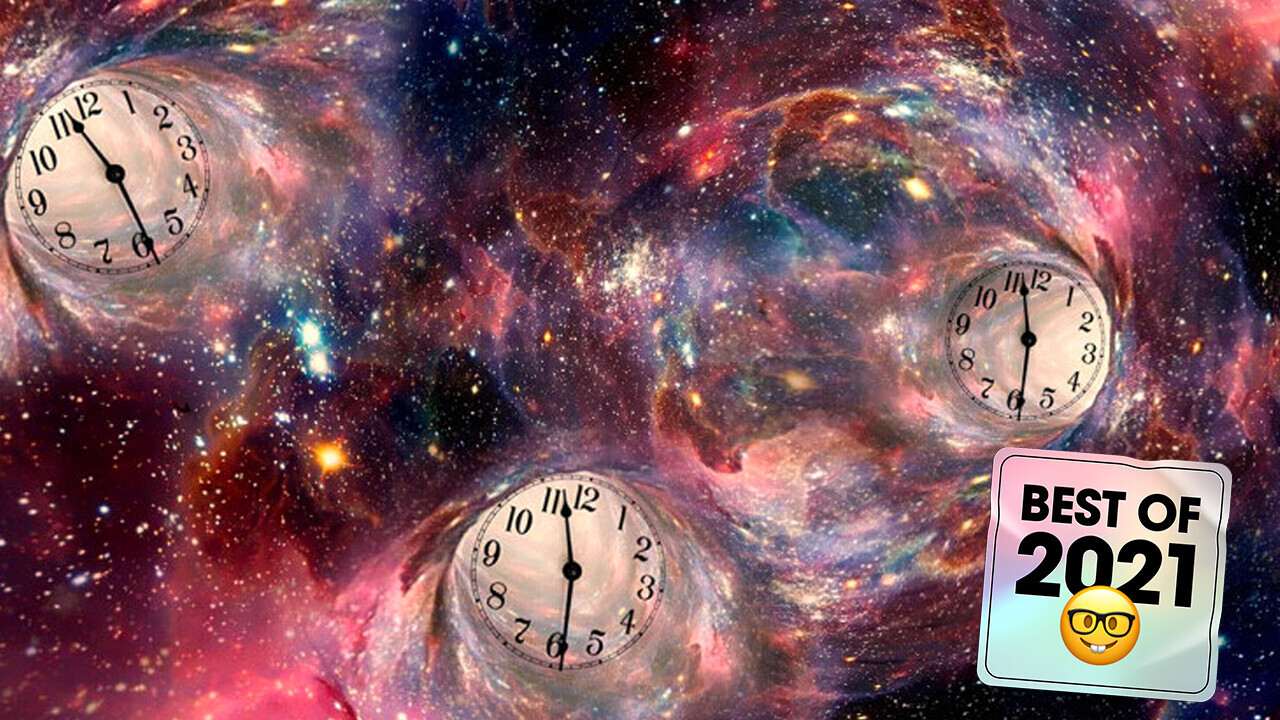
A renowned theoretical computer science expert recently released an astonishing physics pre-print paper that tosses fuel on the fiery debate over… whether humans could use wormholes to traverse the universe or not.
Don’t worry, I’ll explain what this has to do with self-aware robots in due course.
Fun with physics
First, however, let’s lay the foundation for our speculation with a quick glance at this all-new wormhole theory.
The pre-print paper comes courtesy of French researcher Pascal Koiran. According to them, if you apply a different theoretical math metric to our understanding of gravity at the edge of a black hole, you get a different theoretical output. Whodathunkit?
Per an article by astrophysicist Paul Sutter on LiveScience:
Koiran found that by using the Eddington-Finkelstein metric, he could more easily trace the path of a particle through a hypothetical wormhole. He found that the particle can cross the event horizon, enter the wormhole tunnel and escape through the other side, all in a finite amount of time. The Eddington-Finkelstein metric didn’t misbehave at any point in that trajectory.
The implications
Until now, the Schwartzchild interpretation of black holes has made it seem like wormholes would be intraversible by any form of matter – the old “nothing can escape a black hole, not even light” chestnut.
But the new theory says otherwise. And that seems like it should be awesome. In a few thousands years our species might be capable of journeying to the edge of time, space, and reality using magical wormhole portal guns à la Rick Sanchez.
But let’s take a closer look at the research, shall we?
Per Koiran’s pre-print paper:
We show that the particle reaches the wormhole throat for a finite value t′1 of the time marker t′, and continues its trajectory across the throat for t′>t′1. Such a behavior does not make sense in Schwarzschild time since it would amount to continuing the trajectory of the particle “beyond the end of time.”
The two different methods for simulating the potential path of a particle traversing a wormhole may require completely different interpretations of how time works in our universe.
If nothing can escape a blackhole, we can assume the entrance to every wormhole is permanently stuck on infinite pause in both time and space.
However, if we assume that something can escape a black hole, we may need to rethink our entire understanding of space-time.
In a universe where time itself can escape a black hole through discrete physical processes, some of our assumptions about observer theory (which states that particles, when observed, behave as waves) could be flawed.
Get to the AI stuff
Modern artificial neural networks, like the kinds that power deepfakes technology, GPT-3, and facial recognition systems, are a rudimentary attempt to imitate the machinations of the organic neural network running inside our human brains.
The ultimate goal is achieving human-level AI, also known as artificial general intelligence (AGI). However, the world’s foremost leading experts can’t quite agree on exactly how we’re supposed to achieve this.
It’s impossible to tell if we’re actually making progress towards AGI. It could happen tomorrow, in 100 years, or never.
One educated guess we can make, however, is that it’s unlikely we’ll get there with a binary neural network running classical algorithms.
We live in a quantum universe. Whether you believe in wormholes or not is inconsequential to the fact that any attempt at recreating the human brain’s organic neural network through binary representation is unlikely to result in a functional facsimile.
It’s a quantum world after all
But even an advanced quantum neural network could fail to produce AGI if the laws of physics prevent it. What if there’s no way to make a machine experience the passage of time?
Our current understanding of time is essential to how we interpret the math of physics. For instance, the unit of measurement called a “meter” that we apply to distance is currently defined by how far light travels in a vacuum in 1/299,792,458th of a second.
So how far is a meter at the edge of a black hole? In a universe where discrete units of time-space can’t escape a black hole, the space between two points in the event horizon of singularity is operationally infinite.
The physics surrounding this version of our universe would imply that time can be disrupted. And, like all permutable things in our universe, it should be subject to observer theory.
In essence, by defining a quantum AI, we might be producing the necessary observations to manifest a temporal wave in our robot’s processing power. And that would, theoretically, mean the machine could experience a singular moment of self-awareness. Hence the term “AI singularity.”
In this version of the universe, we’re rooting for a paradigm where nothing can escape a black hole.
Here’s why: (theoretically, at least) time has to either be a construct of reality – we observe stuff, those observations are sequenced, those sequences are continuously measured in retrospect, we agree time has passed – or it has to be a discrete “thing” that exists in the universe as tangibly as protons and electrons do.
If it can escape a black hole, that indicates it’s observer-independent and, thus, likely discrete.
In a universe where space-time is as real as atoms, the trick to sentience might involve discovering a method by which to tap in to space-time’s ground truth in the same way humans apparently do.
You know how some apps won’t work if your computer’s time and date aren’t set properly? That, but for the entire universe.
Another way to put this would be: you can call it the missing piece, the quantum question, or a soul… but a universe where time itself exists independent of our observations is one where, for whatever reason, our particular biology is inexplicably special.
Far out right?
Then again, maybe Koiran is wrong. Maybe the laws of physics make it theoretically impossible to traverse a wormhole. Maybe they don’t even exist!
In which case, no, you can’t have the last 10 minutes of your life back.
But you can read the research in full here.
Further reading:
Get the TNW newsletter
Get the most important tech news in your inbox each week.



